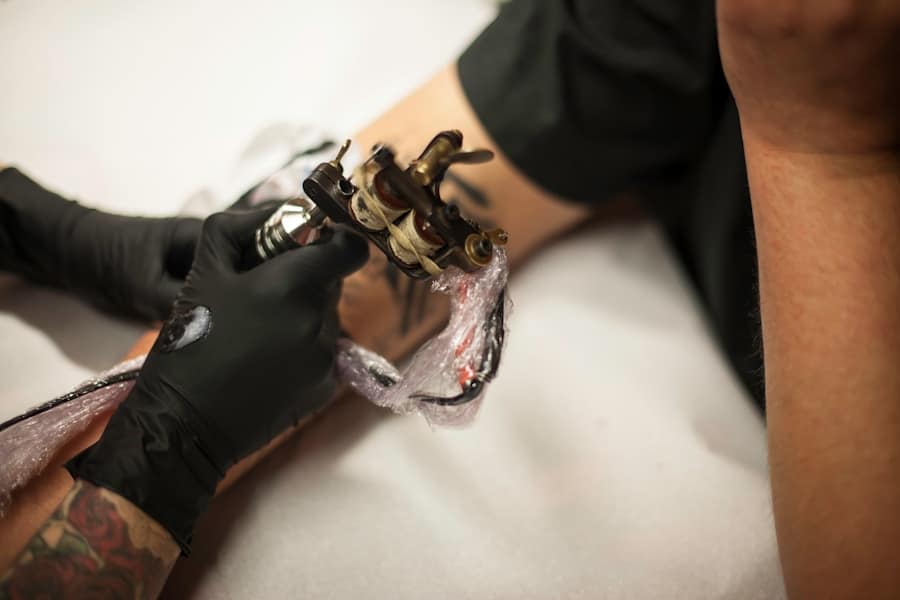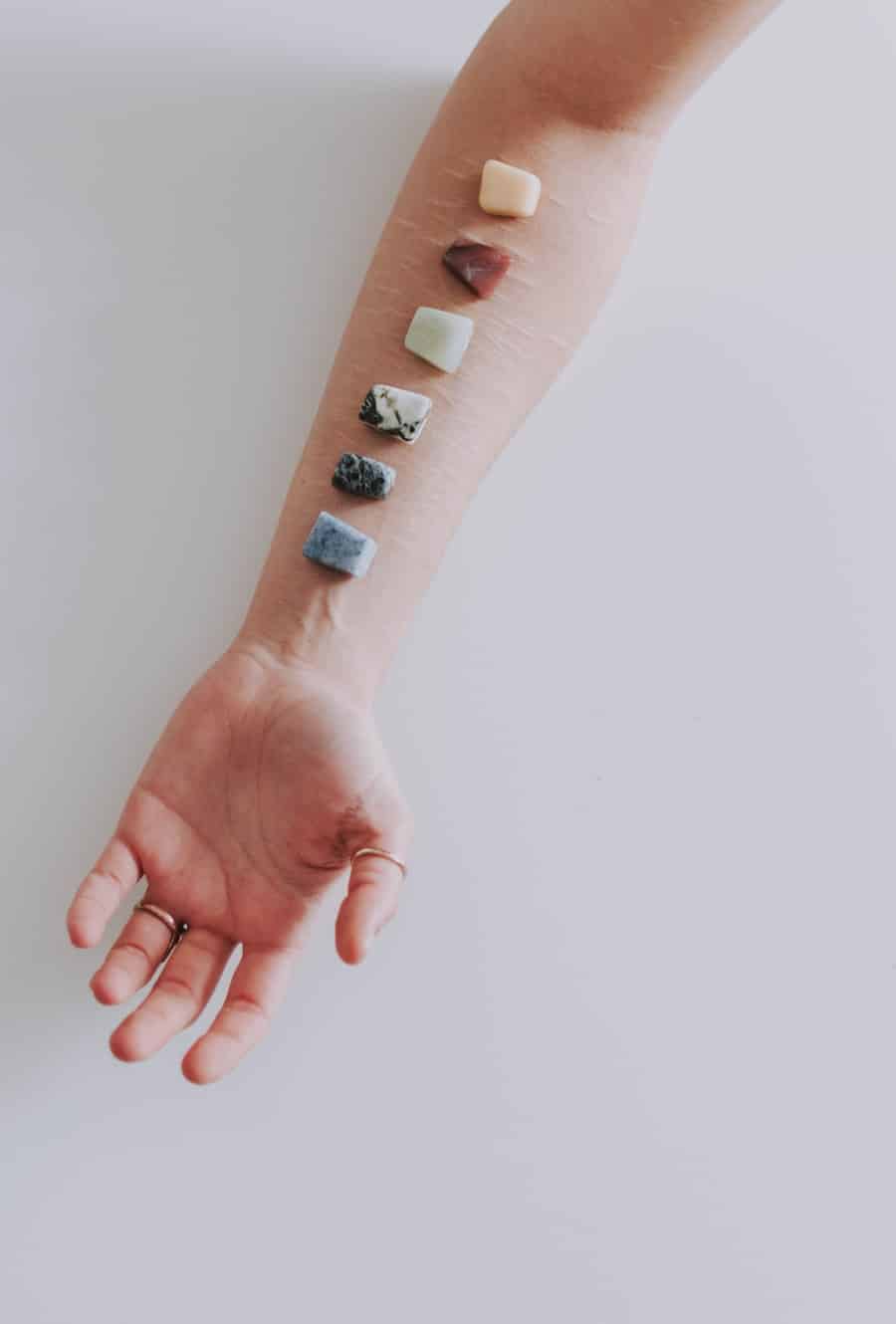The intersection of technology and healthcare has given rise to innovative solutions that promise to revolutionize the way we monitor and diagnose medical conditions. Among these advancements, smart tattoos have emerged as a groundbreaking concept in medical diagnostics. These tattoos are not merely decorative; they are embedded with sensors and electronic components that can monitor physiological parameters in real-time.
The idea of integrating technology into the human body is not new, but smart tattoos represent a significant leap forward, combining aesthetics with functionality. As healthcare continues to evolve, the potential for smart tattoos to provide continuous health monitoring and early diagnosis is becoming increasingly apparent. Smart tattoos are designed to be both functional and minimally invasive, offering a unique alternative to traditional diagnostic methods.
They can track a variety of health metrics, such as glucose levels, hydration status, and even vital signs like heart rate and temperature. This capability is particularly beneficial for individuals with chronic conditions who require constant monitoring. The allure of smart tattoos lies not only in their practicality but also in their ability to blend seamlessly with the human body, making them an appealing option for patients who may be reluctant to wear bulky medical devices.
As research progresses, the implications of smart tattoos for personalized medicine and patient care are profound, paving the way for a future where health monitoring is as simple as applying a tattoo.
Key Takeaways
- Smart tattoos are a new and innovative technology in medical diagnostics, offering a non-invasive and continuous monitoring solution.
- Smart tattoos work by embedding biosensors and microfluidic systems into the skin to detect and analyze biomarkers in the body.
- Applications of smart tattoos in medical diagnostics include monitoring glucose levels, detecting dehydration, and tracking UV exposure.
- Advantages of smart tattoos include real-time monitoring, long-term wearability, and potential for early disease detection, while limitations include potential skin irritation and limited biomarker detection.
- Smart tattoos offer advantages over traditional medical diagnostic methods such as blood tests and wearable devices, providing continuous and convenient monitoring.
How Smart Tattoos Work
At the core of smart tattoos is a sophisticated integration of materials and technology that allows them to function effectively as diagnostic tools. These tattoos typically consist of biocompatible inks that can conduct electricity, along with embedded sensors that can detect various biochemical markers. For instance, some smart tattoos utilize conductive polymers or nanomaterials that respond to changes in the skin’s chemistry, enabling them to monitor glucose levels or dehydration.
The sensors are often connected to a small microcontroller that processes the data and transmits it wirelessly to a smartphone or other devices for analysis. The operational mechanism of smart tattoos involves several key components. First, the tattoo ink is infused with conductive materials that can interact with the body’s physiological signals.
When applied to the skin, these inks form a circuit that can detect changes in electrical resistance or capacitance, which correlate with specific health metrics. For example, when glucose levels rise, the chemical composition of the sweat changes, which can be detected by the sensors embedded in the tattoo.
Applications of Smart Tattoos in Medical Diagnostics

The applications of smart tattoos in medical diagnostics are vast and varied, reflecting the diverse needs of patients and healthcare providers alike. One of the most promising uses is in diabetes management. Traditional methods of monitoring blood glucose levels often involve painful finger pricks and cumbersome devices.
Smart tattoos offer a less invasive alternative by continuously monitoring glucose levels through sweat analysis. This capability not only enhances patient comfort but also provides more accurate and timely data for managing insulin therapy. Beyond diabetes, smart tattoos have potential applications in monitoring hydration levels, which is particularly relevant for athletes and individuals in physically demanding occupations.
By analyzing sweat composition, these tattoos can provide real-time feedback on hydration status, helping users avoid dehydration-related complications. Additionally, smart tattoos can be employed in monitoring vital signs such as heart rate and temperature, making them valuable tools for early detection of health issues. For instance, athletes could use smart tattoos to track their physiological responses during training sessions, allowing for more tailored training regimens and injury prevention strategies.
Advantages and Limitations of Smart Tattoos
The advantages of smart tattoos are numerous and compelling. One of the most significant benefits is their non-invasive nature, which makes them more appealing than traditional diagnostic methods that often involve needles or other invasive procedures. This aspect is particularly important for patients who may have a fear of needles or those who require frequent monitoring.
Furthermore, smart tattoos can provide continuous data collection, allowing for more comprehensive insights into a patient’s health over time rather than relying on sporadic measurements. However, despite their many advantages, smart tattoos also face limitations that must be addressed before they can become mainstream in medical diagnostics.
While traditional tattoos can last for years, smart tattoos may require regular maintenance or replacement due to wear and tear on the electronic components. Additionally, there are challenges related to data accuracy and reliability; factors such as skin temperature, sweat composition variability, and environmental conditions can all affect sensor performance. Ensuring that these devices provide consistent and accurate readings is crucial for their acceptance in clinical settings.
When comparing smart tattoos to traditional medical diagnostic methods, several key differences emerge that highlight the potential advantages of this innovative technology. Traditional diagnostic methods often rely on laboratory tests or physical examinations that can be time-consuming and inconvenient for patients. For example, blood tests require samples to be drawn and sent to a lab for analysis, which can delay diagnosis and treatment decisions.
In contrast, smart tattoos offer real-time monitoring capabilities that can provide immediate feedback on a patient’s health status. Moreover, traditional methods often lack the ability to provide continuous data collection over extended periods. Patients may only visit their healthcare provider periodically for check-ups or tests, leading to gaps in data that could be critical for managing chronic conditions.
Smart tattoos bridge this gap by enabling continuous monitoring without requiring frequent visits to a clinic or hospital. This shift towards real-time data collection not only enhances patient engagement but also empowers individuals to take an active role in managing their health.
Future Developments and Research in Smart Tattoos
The future of smart tattoos in medical diagnostics is bright, with ongoing research focused on enhancing their functionality and expanding their applications. Researchers are exploring advanced materials that could improve sensor sensitivity and durability while also ensuring biocompatibility with human skin. Innovations such as flexible electronics and biodegradable materials are being investigated to create smart tattoos that are not only effective but also environmentally friendly.
Additionally, there is significant interest in integrating artificial intelligence (AI) with smart tattoo technology. By leveraging machine learning algorithms, these devices could analyze collected data more effectively, identifying patterns and trends that may indicate emerging health issues before they become critical. This integration could lead to personalized health insights tailored to individual patients’ needs, further enhancing the utility of smart tattoos in clinical practice.
Ethical and Privacy Considerations of Smart Tattoos in Medical Diagnostics

As with any emerging technology in healthcare, ethical and privacy considerations surrounding smart tattoos must be carefully examined. One primary concern is data security; since smart tattoos collect sensitive health information, ensuring that this data is protected from unauthorized access is paramount. Patients must have confidence that their personal health information will remain confidential and secure from potential breaches.
Moreover, there are ethical implications related to consent and autonomy. Patients should be fully informed about how their data will be used and have control over who has access to it. The potential for misuse of health data raises questions about how this information could be leveraged by third parties, such as insurance companies or employers.
Establishing clear guidelines and regulations surrounding the use of smart tattoos in medical diagnostics will be essential to address these concerns while promoting innovation in healthcare.
Conclusion and Implications for the Future of Medical Diagnostics
The advent of smart tattoos represents a significant advancement in medical diagnostics, offering a unique blend of technology and healthcare that has the potential to transform patient monitoring and management. As research continues to evolve in this field, the implications for personalized medicine are profound; patients may soon have access to continuous health monitoring solutions that empower them to take charge of their well-being. While challenges remain regarding accuracy, durability, and ethical considerations, the ongoing development of smart tattoo technology holds promise for addressing many current limitations in traditional diagnostic methods.
As we look toward the future, it is clear that smart tattoos could play a pivotal role in shaping the landscape of medical diagnostics, leading to improved patient outcomes and enhanced quality of care across various healthcare settings.
In addition to the advancements in medical diagnostics with smart tattoos, technology continues to revolutionize various industries. For example, the article The Ultimate Guide to the Best Screen Recording Software in 2023 explores the latest tools and features available for capturing and sharing screen recordings. This type of software can be incredibly useful for creating tutorials, presentations, and demonstrations in a wide range of fields. As technology continues to evolve, it is important for professionals to stay informed about the best tools and resources available to enhance their work.
FAQs
What are smart tattoos in medical diagnostics?
Smart tattoos are a type of biosensor that is embedded in the skin to monitor various health parameters such as glucose levels, hydration, and UV exposure. These tattoos use advanced technology to provide real-time data for medical diagnostics.
How do smart tattoos work?
Smart tattoos typically contain biosensors and microfluidic systems that can detect and analyze specific biomarkers in the body. These tattoos are designed to be minimally invasive and can transmit data wirelessly to a monitoring device or smartphone.
What are the potential benefits of smart tattoos in medical diagnostics?
Smart tattoos have the potential to revolutionize medical diagnostics by providing continuous, non-invasive monitoring of various health parameters. They can help individuals and healthcare professionals to track and manage chronic conditions more effectively.
Are smart tattoos currently available for medical use?
While smart tattoos are still in the research and development phase, there are ongoing studies and trials to further explore their potential applications in medical diagnostics. It is expected that smart tattoos will become available for medical use in the near future.
What are the challenges associated with smart tattoos in medical diagnostics?
Challenges associated with smart tattoos include ensuring accuracy and reliability of the data collected, addressing potential skin reactions or allergies, and developing cost-effective and scalable manufacturing processes. Additionally, ethical and privacy considerations will need to be addressed.

